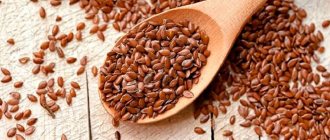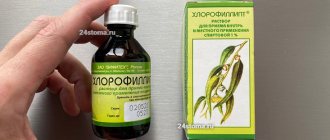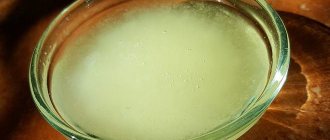L-carnitine is a vitamin-like substance that is found in the muscle tissue of all mammals, as it plays an important role in metabolism. Human muscle tissue and liver contain about 20-30 g of carnitine, depending on training and genetic characteristics. The need for it ranges from 0.2 to 0.5 g, and can reach up to 2 g per day during ultra-intense training.
L-carnitine is found in many foods that we eat every day, mainly all types of meat, as well as fish, cottage cheese, wheat and others. Despite this, there is often a shortage of carnitine from traditional sources and additional consumption is required, especially for athletes and people leading an active lifestyle and wanting to lose excess weight.
The daily dosage depends on many indicators, in particular on age, anthropometric indicators, health status and level of physical activity. Approximate dosages:
- For children under one year of age – up to 30 mg.
- Children from 1 to 3 years inclusive – 35-60 mg.
- Children from 4 to 6 years old inclusive – 60-100 mg.
- Children from 6 to 18 years old - from 100 to 500 mg.
- For adults who do not engage in sports, 250 to 500 mg is recommended.
- For athletes and people leading an active lifestyle and those who want to reduce excess weight, the recommended daily dose is from 500 to 1500 mg.
Despite the drug not being 100% harmless, you should not exceed the dose of 2 g/day, since this makes no sense, there is no direct relationship between the amount of carnitine consumed and the intensity of weight loss.
The duration of treatment can be from 2 to 6 months.
What is L-carnitine?
Firstly, it should be noted that L-carnitine is not that coveted “magic” pill that will help you lose weight without making any effort. Secondly, the probability that such a “magic” pill exists in principle tends to zero at the speed of light.
So, carnitine is found in muscle tissue and the name comes from the Latin “carnis” - meat. L-carnitine (levocarnitine) is a natural substance related to B vitamins, therefore it is often called a vitamin-like substance, and is also mistakenly called vitamin B11.
This substance is involved in metabolic processes that occur both in muscle tissue and in the liver. The main process in which levocarnitine is involved is the process of producing energy from fats. To be more precise, carnitine transports fatty acids into mitochondria, where oxidation (combustion, perhaps more eloquently) of fatty acids and energy production occurs.
To understand, let’s take a closer look at the process of using lipids as an energy source. Fat accumulated as a result of a couch-office lifestyle can be used by the body in 3 stages:
- Destruction of fat molecules (triglycerides) into glycerol and fatty acids under the influence of a complex of hormones and enzymes, as well as physical activity.
- Transport of fatty acids to mitochondria, where the oxidation process occurs
- Fat oxidation in mitochondria is one of the main processes of providing energy to the body.
Thus, L-carnitine promotes only one stage in the fat burning process. Excessive consumption of L-carnitine will not increase the transport of fatty acids if not enough of them were formed at the first stage. Levocarnitine only increases the effectiveness of aerobic (this is important) training, allowing you to burn a little more fat than without it. Something like this... And yes, training to burn fat should be aerobic, i.e. with sufficient oxygen supply to the tissues, since under anaerobic conditions fat cannot be used as an energy source, unlike carbohydrates.
In recent decades, there has been a steady increase in the number of patients with chronic cerebrovascular diseases [1, 2, 7, 8]. ICD-10 identifies “chronic cerebral ischemia” (CHI), which in terms of prevalence occupies a leading place in the structure of cerebrovascular diseases. In the domestic literature, instead of CCI, the term “dyscirculatory encephalopathy” is often used, which means a disease with progressive multifocal diffuse brain damage, manifested by neurological disorders of varying degrees, caused by a reduction in cerebral blood flow, repeated transient ischemic attacks or previous cerebral infarctions [6]. Depending on the severity of clinical manifestations in the domestic literature, it is customary to distinguish 3 stages of chronic cerebral circulatory failure [4].
CCI is a heterogeneous pathological process. Considering the complexity of the pathogenetic mechanisms of CCI, as well as a number of main clinical manifestations, it is not possible to reduce the choice of therapeutic intervention to any single medicinal or physical factor. In recent years, the possibility of using L-carnitine has attracted increasing interest in clinical practice.
Carnitine was first synthesized in 1960; in 1962, the role of carnitine was determined as the main transporter of long-chain fatty acids into mitochondria through their inner membrane [9].
It is now known that the efficiency of mitochondria is largely determined by the amount of the fatty acid transporter, L-carnitine [11]. Carnitine is formed endogenously in the human body (with the participation of vitamins C, B3, B6, B12, B9, iron, lysine, methionine and a number of enzymes), and also comes from meat foods. With a lack of carnitine, the oxidation of fatty acids in mitochondria slows down, resulting in a decrease in ATP production. The less carnitine (and its esters) is contained in a person’s blood plasma, the lower his performance. Brain tissue is rich in carnitine, and its concentration is quite high in various parts of the central nervous system, differing in their functional activity (hypothalamus, cerebellum, cortex, spinal cord), while its content in some other tissues and blood plasma is low [13].
There are 2 isomers of carnitine - dextro- and levorotatory (D- and L-forms), which have different chemical and biological properties. It is believed that L-carnitine is present in the human and animal body, which is biologically active and safe to use [5].
One of the main functions performed by L-carnitine in the body is to ensure the transport of free fatty acids from the cytosol to the mitochondria. L-carnitine is an essential transporter of long-chain fatty acids across the inner mitochondrial membrane to the site of oxidation and energy production in the form of ATP [10]. According to their chemical properties, free fatty acids are metabolically inert and cannot undergo biochemical transformations until they are activated. Activation of free fatty acids occurs on the outer surface of the mitochondrial membrane with the participation of coenzyme A in the presence of magnesium ions and ATP. Acetyl coenzyme, located on the outer surface of the membrane, catalyzes reactions during which L-carnitine forms acetylcarnitine intermediates. L-carnitine ensures the entry of activated free fatty acids into the mitochondria, ensuring their penetration through the inner layer of the membrane. Fatty acids entering the mitochondria in this way are used in the beta-oxidation system, which in its energy production efficiency is close to the tricarboxylic acid cycle (Krebs cycle) [15].
With age, the concentration of carnitine in the body decreases, resulting in disruption of the metabolic pathways responsible for energy production. It was shown that carnitine intake in elderly patients caused a progressive increase in total muscle mass and a significant decrease in physical and mental fatigue compared with the placebo group [21].
A number of studies provide information about the effectiveness of L-carnitine in acute cerebrovascular accidents [3]. One randomized controlled clinical trial showed that regular intake of L-carnitine reduces the severity of physical and mental fatigue and improves cognitive abilities in centenarians (aged 100 years or more) [17]. It is of interest to study the effectiveness of the use of L-carnitine in the initial forms of CCI.
The purpose of this study is to study the effectiveness of L-carnitine in patients with stage 1 and 2 CCI.
Material and methods
The comparative parallel clinical study included 60 patients diagnosed with stage 1-2 CCI, including 22 men and 38 women, aged from 42 to 74 years (average - 61.2±8.2 years).
Patients aged from 41 to 74 years were selected, undergoing outpatient or inpatient examination, whose condition met the ICD-10 criteria (cerebrovascular disease, CCI).
The study did not include patients with stage 3 CCI, dementia, a history of stroke or myocardial infarction, other (non-vascular) diseases of the central nervous system, the presence of mental illness, a history of gastric or duodenal ulcers, diabetes mellitus, liver and kidney failure , diseases of the thyroid gland, severe insufficiency of blood supply, cancer. Patients who were taking or had taken nootropic and neurometabolic drugs, as well as drugs affecting systemic blood flow less than 4 weeks before inclusion in the study, were also excluded.
All patients were informed about the procedures and treatment plan and gave written consent to participate in the study. The work was approved by the ethical committee of the Russian National Research Medical University. N.I. Pirogov.
All patients received basic treatment for CCI, including the prescription of antihypertensive and antiplatelet drugs. But depending on the characteristics of the therapy in general, the patients were divided into 3 groups. Group 1 included 20 patients who received 1000 mg of L-carnitine (the drug Carnitone) per day for 60 days. In group 2 (20 patients), the drug was prescribed at a dose of 2000 mg per day for 60 days. Group 3 was the control group, in which only basic therapy was used for 60 days.
All patients underwent a somatic and neurological examination, which was supplemented by clinical and biochemical blood tests, duplex scanning of the precerebral arteries, transcranial Doppler ultrasound and magnetic resonance imaging (MRI). A number of scales were also used: the adapted quantitative neurological scale of A.I. Fedina, a brief mental status assessment scale (Mini Mental State Examination, MMSE), a “number search” test (Schulte tables) and a subjective assessment scale for asthenia MFI-20.
Patients in the selected groups did not differ in gender and age, as well as in concomitant diseases.
In particular, all examined patients had a history of arterial hypertension, and the groups did not differ in the duration of this disease, baseline systolic and diastolic blood pressure, and heart rate. In all three groups studied, approximately equal numbers of patients received antihypertensive therapy.
In the studied groups, atherosclerosis (cardiosclerosis, damage to the carotid arteries), obesity and lipid disorders occurred with almost the same frequency.
The results of the study were subjected to statistical analysis using SYSTAT v.10.2 and Statistica v.6.0. Comparison of average values was carried out using the Student's test - two modifications of this test were used for independent and dependent samples. Nonparametric statistical methods were used—U-test using the Mann-Whitney method. The critical value of the significance level was taken equal to 5% ( p
<0,05).
results
All 60 patients included in the study completed the full course of treatment. The patients presented complaints characteristic of clinical manifestations of stage 1-2 CCI. After a course of treatment in the 1st and 2nd groups of patients, positive dynamics were revealed in the form of regression of the majority of complaints presented before treatment. Using a two-sided Fisher test, the number of patients in groups with various complaints before and after treatment was compared (Table 1)
.
Given in table. 1
The results indicate that the considered indicators changed significantly only in two main groups.
Thus, in these groups, by the time the course of treatment was completed, the frequency of complaints of weakness, decreased performance, memory impairment, headache, dizziness, and unsteadiness of gait significantly decreased ( p
<0.05).
There were no significant changes in the indicators “tinnitus”, “mood disturbance” and “sleep disturbance” ( p
>0.05).
In the control group, there were no significant changes in the frequency of complaints before and after treatment ( p
>0.05).
A significant difference in the dynamics of complaints in the two main groups of patients was only with memory deterioration; in group 2, its positive dynamics were more pronounced ( p
<0.05).
The dynamics of other complaints in the two main groups of patients did not differ significantly ( p
>0.05).
Analysis of the dynamics of neurological disorders after a course of treatment based on the adapted quantitative neurological scale of A.I. Fedina showed positive changes in individual neurological symptoms and syndromes in all three groups. To compare data before and after treatment, the paired Wilcoxon test was used (Table 2)
.
From the table 2
it can be seen that significant changes in indicators were observed in both main groups for the parameters “general cerebral symptoms”, “autonomic disorders” and “total score” (
p
<0.05).
There was no significant difference in the severity of the dynamics of neurological syndromes between these groups ( p
>0.05).
In patients in the control group, no significant dynamics of neurological syndromes were observed after treatment ( p
>0.05).
Compared to the control group, both in groups 1 and 2, the dynamics of cerebral and autonomic symptoms, as well as the total score, were more pronounced ( p
<0.05).
Data from the neuropsychological examination of patients on the MMSE scale before and after treatment are given in Table. 3
.
When comparing neuropsychological testing indicators at the beginning of the study (1st visit), no statistically significant differences were found between the groups ( p
>0.05). This statement applies both to individual subscales of the test and to the overall score obtained by patients using this method.
As can be seen from table. 3
, in group 1, statistically significant differences after treatment were detected in the total score of the MMSE scale and in the “concentration” and “memory” subscales (
p
<0.05).
In group 2, along with these indicators, after treatment, scores on the “reproduction” subscale improved ( p
<0.05), and the overall score on the scale was significantly higher compared to group 1 (
p
<0.05).
When comparing data from the main groups with the control group, more pronounced dynamics were noted in the subtests “concentration of attention” and “memory”, as well as the total score of the MMSE scale ( p
<0.05).
In the three studied groups of patients, a comparison was made using the paired Wilcoxon test of the speed of filling out Schulte tables before and after treatment (Table 4)
.
As can be seen from table. 4
, during treatment, in patients of groups 1 and 2, the time spent working with all 5 tables decreased compared to the baseline, but only the time spent working with the 5th table improved statistically significantly (
p
<0.05).
At the same time, more pronounced dynamics of the average time to complete five tests was in the 2nd group of patients compared to the 1st ( p
<0.05).
In the control group of patients, test scores remained virtually unchanged. When comparing the indicators of the main groups with the control, there was significant dynamics in the main groups when working with the 5th table and in the average time for completing five tests ( p
<0.05).
Comparison using the paired Wilcoxon test of the severity of asthenic disorders recorded according to the subjective asthenia questionnaire before and after treatment in the three examined groups of patients is given in Table. 5
.
From the table 5
It can be seen that in groups 1 and 2 there was a statistically significant change in the total score and all subtests of the scale compared to the initial level (
p
<0.05).
In patients of these groups, the level of general, physical and mental asthenia decreased, activity and level of motivation increased. In patients of group 2 compared to group 1, the dynamics of general asthenia and the total score on the scale were more pronounced ( p
<0.05).
In the control group of patients who received only basic therapy, there was a tendency to improve scores on the “activity” subtest, which did not reach statistical significance ( p
>0.05) and is apparently associated with additional procedures.
When comparing the indicators of the main groups with the control group, the dynamics of the total score and all subtests of the scale in the main groups were more significant ( p
<0.05).
The studied drug showed a good level of safety and tolerability. One patient of the 2nd group had increased irritability and sleep disturbances (insomnia, sleep with frequent awakenings), which regressed within the 1st week. In 1 patient from group 1, the headache intensified, which coincided with a severe traumatic situation in the family. Symptoms regressed when tranquilizing drugs were added to treatment. In 1 patient in the control group, headache and dizziness increased due to changes in blood pressure (the patient refused to take antihypertensive drugs) and a traumatic situation. After normalization of the emotional background and blood pressure numbers, the symptoms regressed.
Discussion
Pharmacotherapeutic effects for any form of ischemic brain damage should be as comprehensive as possible and aimed not only at restoring normal blood flow in the affected area, but also eliminating (or weakening) the “ischemic cascade”, i.e. a complex of neurometabolic, neurotransmitter, neurotrophic and other reactions that directly determine the development of degenerative-destructive changes and the formation of neurological disorders.
The symptom complex of clinical manifestations of CCI included cerebral symptoms characteristic of this disease, vestibulo-cochlear disorders, pyramidal and corticonuclear insufficiency, autonomic and coordination disorders. All patients were characterized by the presence of cognitive impairment; some patients had psychoemotional disorders in the form of anxiety and depression. All studied patients had severe asthenic symptoms.
The study revealed a significant effect of carnitone on the asthenic symptom complex in CCI. The main neurological symptoms of the 1st stage of CCI are essentially expressed in asthenic syndrome. Headaches and a feeling of heaviness in the head, dizziness, general weakness, increased fatigue, emotional lability, sleep disturbances, decreased performance - this entire set of complaints is characteristic of the initial stage of CCI. Taking carnitone increased the performance and daily activity of patients, thus confirming that disturbances in mitochondrial homeostasis can serve as the basis for the development of asthenic symptoms [16]. The positive effect of carnitone was clearly visible in a significant improvement in cognitive functions (based on the results of the MMSE scale and the Schulte test). At the same time, a dose-dependent effect of the drug was revealed. In the 1st group, when taking 1000 mg of carnitone per day, statistically significant differences after treatment were revealed in the total score of the MMSE scale and the “concentration” and “memory” subscales, while in the 2nd group (taking carnitone at a dose of 2000 mg per day), along with these indicators, after treatment the indicators of the “reproduction” subscale improved, and the overall score on the MMSE scale was significantly higher.
A similar dose-dependent effect of carnitone was noted when analyzing the performance of the Schulte test. More pronounced dynamics of the test in terms of the average time to complete five tests was in the 2nd group of patients compared to the 1st.
Such effects are associated with the fact that in brain tissue, L-carnitine transports acetyl residues from mitochondria to the cytosol, thus participating in the synthesis of acetylcholine and acetylcarnitine [18, 19]. The neurobiological effects of acetylcarnitine include direct effects on energy and phospholipid metabolism, cellular macromolecules (such as neurotrophic factors and neurohormones), synaptic morphology and the transmission of numerous neurotransmitters [20, 22]. The use of carnitone leads to an increase in the content of L-carnitine in tissues, restores carnitine losses and reduces the severity of symptoms in ischemic damage [12, 14].
Indications for use
- For weight loss
The main indication for the use of L-carnitine is weight loss. Since L-carnitine plays an important role in the process of burning fat and, therefore, is one of the main agents used in schemes and diets related to weight loss.
- For mental activity
Based on the results of several studies, it can be concluded that the use of L-carnitine helps improve cognitive functions of the brain. And levocarnitine is recommended as a prevention of unwanted changes in the brain with age, as well as as a means of improving memory, concentration and attention.
- To increase endurance
Since L-carnitine promotes the production of additional energy from fat, it is indicated for use in athletes to develop endurance.
Sometimes the drug is recommended for vegetarians who are deficient in this substance due to the exclusion or insufficient consumption of animal products.
Use of vitamin B11 in medicine
After the discovery of L-carnitine, the beneficial compound was first used in medical practice, and only a few years later the nutrient became popular among athletes. Initially, vitamin B11 was used as a biological supplement to the diet of people undergoing rehabilitation after a heart attack. Today, to increase the effectiveness of the nutrient, it is combined with coenzyme Q10. In addition to stabilizing the condition of “cores,” levocarnitine is used in gastroenterology. The compound normalizes the acidity of gastric juice and has a beneficial effect on liver function.
Instructions for use of the drug
- To improve immunity and lose weight, it is recommended to take vitamin B11 from 1500 to 3000 milligrams per day.
- For the treatment of kidney diseases, liver diseases, and heart pathologies, the daily requirement for levokartina is 1000 milligrams.
- For the rehabilitation of professional athletes after injuries, the daily requirement of L-carnitine is 2000 – 3000 milligrams.
In addition to consuming a synthetic form of the vitamin, patients are advised to enrich their daily diet with foods rich in the beneficial compound (see section Food sources).
Natural sources of carnitine?
L-carnitine is found mainly in animal products, particularly meat and processed meats. In order to meet increased carnitine requirements, traditional sources are often not enough, since in addition to L-carnitine they contain fat and other nutrients that may not fit into the nutrition plan as part of a diet or sports training. In this regard, using L-carnitine supplements may be the best way to go.
However, you should not neglect natural sources of carnitine; the table shows products containing high concentrations of levocarnitine.
Meat and poultry
| Product, 100 g | Product type | L content , mg |
| Mutton | Raw/cooked | 150-160 (50-55) |
| Beef | Raw/cooked | 120-130 (45-50) |
| Veal | Stewed | 40-45 |
| Pork | Stewed | 20-25 |
| Rabbit meat | Stew | 20-25 |
| Turkey | Boiled | 13-15 |
| Chicken | Boiled | 8-10 |
| Duck liver | Stewed | 4-5 |
Fish and seafood
| Product, 100 g | Product type (processing) | L content , mg |
| Crustaceans | Boiled | 10-15 |
| Herring | Raw/salted | 10-12 (3,5-4) |
| Acne | Smoked | 6,7-7 |
| Flounder | Raw | 6,3-6,5 |
| Shrimp, langoustines | Raw | 6-6,5 |
| Sea bass | Fried | 5-5,5 |
| Tuna | Canned | 3-3,5 |
| Mussels | Boiled | 2,5-3 |
| Squid | Boiled | 2-2,5 |
In sea fish, the L-carnitine content rarely exceeds 5 mg, in river fish – up to 4 mg.
Dairy
| Product, 100 g | L content , mg |
| Goat cheese | 12-13 |
| Condensed milk | 9-10 |
| Yogurt | 3,5-4 |
| Unpasteurized milk | 3,5-3,9 |
| Ice cream | 3,5-3,7 |
| Heavy cream | 3-3,5 |
| Cottage cheese | 2,4-2,9 |
| Sour cream | 2,1-2,4 |
| Hard cheeses | 1,5-2 |
For comparison, in the table below you can see the carnitine content in foods of plant origin.
| Product, 100 g | L content , mg |
| Mushrooms | 1,3-3,9 |
| Fruits | 0,002-0,006 |
| Fruit juices | 0,0019 |
| Vegetables | 0,19-1 |
| Nuts | 0,05-0,08 |
| Peanut butter | 0,083 |
It should be borne in mind that during heat treatment of products, 25-30% of L-carnitine is destroyed and this must be taken into account.
Pharmacological properties
L carnitine is a drug whose main active ingredients are active amino acids. Structurally, they resemble the B vitamins produced by our body (l-carnitine is often called vitamin B11 or BT). The product has a pronounced antithyroid, anabolic and antihypoxic effect, activates the regenerative abilities of cells and tissues, accelerates metabolic processes, and increases appetite.
The body's own (endogenous) l-carnitine is produced mainly in the human liver. The exogenous active substance that enters the bloodstream after taking the medicine has similar properties. The medication normalizes metabolism, maintains the activity of coenzyme A. Stimulates fat metabolism, as a result of which the consumption of carbohydrates and proteins in the body slows down.
L carnitine increases the secretion of the digestive glands of the stomach and intestines, increases the efficiency of gastrointestinal enzymes. For athletes, the drug is useful because it reduces the level of lactic acidosis in the blood, reduces the content of fatty deposits in the muscles, and normalizes weight. The medicine has an excellent neurotrophic effect and quickly restores damaged nerve tissue.
Types of L-carnitine
- L-carnitine is 3-hydroxy-4-N-trimethyl-aminobutyric acid, this is the formula that is synthesized in the body from the amino acids lysine and methionine.
- Acetyl-L-Carnitine (ALCAR) is an ester form of L-carnitine with the addition of an acetyl group, which allows the substance to cross the blood-brain barrier. Only this form of carnitine helps improve brain activity. This form is also absorbed faster than the standard form of L-carnitine, but is also excreted much faster.
- L-carnitine L-tartrate is a non-ester (chelate) form of L-carnitine and tartaric acid, which is quickly absorbed in the body and, unlike other forms, remains in high concentration in the blood for a long time. This form is most often used by sports nutrition manufacturers.
- Glycine propionyl-L-carnitine (GPLC) is the ester form of L-carnitine bound to the amino acid glycine. This form has an antioxidant effect in the body and can increase blood flow during exercise, however, it is quickly eliminated from the body.
- L-carnitine fumarate - contains a fumaric group, has good digestibility, as well as antioxidant properties. Rarely used as a source of L-carnitine.
- Which is better?
In order to reduce body weight, it is recommended to choose non-ether forms (pure carnitine or carnitine tartrate), they are absorbed much better than other forms, and the carnitine content in the blood after taking these supplements is much higher and the effect lasts longer. At the same time, to improve brain activity, it is possible to use only the acetyl form.
Consequences of levocarnitine deficiency
L-carnitine deficiency is dangerous for the child’s body due to the following disorders:
- low body weight;
- delayed intellectual development;
- delayed physical and psychomotor development;
- muscle necrosis;
- myoglobinuria;
- hypoglycemia;
- lipid myopathy;
- fatty liver;
- cardiomyopathy;
- muscle pain;
- weakness.
If a carnitine deficiency is suspected, a mandatory examination is carried out, based on which the doctor selects the optimal dosage of the drug.
Release forms
- Powder
Without additives, L-carnitine has a rather unpleasant taste, so powder products usually use various combinations of components, with energy drinks, vitamins, minerals and biologically active substances. Manufacturers are also forced to add such combinations of flavoring additives that will neutralize the unpleasant taste of carnitine and other substances. If you use natural flavors, the price of the product will be astronomical, and artificial flavors have conflicting reviews both in the scientific community and among consumers.
- Pills
L-carnitine in tablet form is most often found in pharmacies. The main disadvantage is the small dosages of the active substance in one tablet. As a result, this form is unprofitable and inconvenient.
- Capsules
The capsule form of L-carnitine is also pure, without additives, impurities, or sweeteners. The capsule usually contains 500 mg of L-carnitine, 4 of which are required per day. Before training, the daily dose is taken once within 30-40 minutes. On rest days, the supplement is taken 2 capsules 2 times a day after meals (the first dose in the morning, the second at lunch or at night). Capsules are washed down with a glass of water.
- Liquid form (ampoules)
This form with a high concentration of the active substance is quite convenient to use. However, when producing a liquid form, manufacturers are forced to add additional ingredients to stabilize taste and shelf life, including fast carbohydrates and preservatives.
- Which is better?
When choosing a form, you need to take into account the concentration of the active substance and price. If we proceed from digestibility, depending on the form of release of the drug and the maximum benefit, then the best options will be in the form of capsules and ampoules with a high concentration of the active substance.
How to take L-carnitine correctly?
During strength training
The use of L-carnitine during strength training is not advisable; as already reported above, carnitine only acts during aerobic exercise.
For weight loss
L-carnitine should be used for weight loss based on the content of the active substance, therefore, 500-1500 mg of pure L-carnitine 40 minutes before the start of training or any physical activity. Taking during or after exercise is also inappropriate, since an increased need for L-carnitine is observed only at the time of physical activity; in order to provide the body with an increased amount of the active substance at this moment, the product must be taken 40 minutes before the start of physical activity. For two workouts per day, the portion is divided in half and 250-750 mg is taken before each workout.
Daily norm
To ensure optimal effect, it is recommended to take 500-1500 mg of L-carnitine per day. The use of more than 2000 mg per day is not recommended.
Duration of the course
Regardless of the form and type of L-carnitine, the duration of use is 2-3 months, the maximum period of use is 6 months. After the course of treatment, you should take a break of 2-8 weeks.
Daily norm
The body’s physiological need for levocarnitine depends on the person’s type of activity, age, gender, weight, and the presence of diseases.
For newborns and infants up to one year, the daily requirement of vitamin B11 is 10-15 milligrams, for children from 1 to 3 years old - 30-50, for children from 4 to 6 years old - 60-90, for school-age children and adolescents from 7 to 18 years – 100-250, for adults – 300.
The liver and kidneys of healthy children, men and women produce L-carnitine from the amino acids lysine and methionine, fully covering the body's need for this nutrient. However, this occurs only under the condition of proper nutrition and sufficient intake of vitamins, C, and methionine.
The daily requirement for levocarnitine increases in people who lead an active lifestyle, experience heavy physical activity (during training), mental stress, or have diseases of the digestive system.
At the same time, the opinions of nutritionists regarding taking large doses (2000-4000 milligrams) of vitamin B11 are not clear. Some believe that systematically exceeding the daily dose of 300 micrograms can cause adverse reactions (allergies), addiction of the body, and as a result, reduce the production of its own levocarnitine. As a result, this will serve as a reason for the development of addiction. Other nutritionists believe that increasing the norm has a beneficial effect on the human body: it improves the functioning of the heart, blood vessels, energy metabolism, and “dries out” muscle mass.
Depending on the form of release of the drug
- Taking L-carnitine tablets
L-carnitine tablets are taken according to the manufacturer's instructions, not exceeding the daily allowance of 2000 mg. The tablets take a little longer to digest, so it is advisable to take them 40-60 minutes before starting a workout or physical activity.
- Taking L-carnitine capsules
The capsules are absorbed quite quickly, so they should be used according to the instructions, not exceeding the maximum daily intake 40 minutes before the start of physical activity.
- Taking L-carnitine in liquid form
Take according to instructions, without exceeding the maximum dosage, 40 minutes before training. If necessary, you can dilute the ampoule in a glass of water. Please note that often the liquid form contains sugars and other components that may interfere with optimal goal achievement.
- Taking L-carnitine powder
One serving is equal to one measuring spoon provided by the manufacturer, which must be diluted in 250-300 ml of water. Take 40 minutes before training.
Regardless of the form of release and the type of L-carnitine, there is no need to exceed the maximum dosage of 2 g. Since there is no direct relationship between the concentration of carnitine and the weight loss process. As stated above, the process of burning fat is a multi-stage process, and carnitine affects only one stage.
How to take with other drugs?
- L carnitine and BCAA
L-carnitine combines well with almost all sports nutrition products and dietary supplements, and in particular with branched chain amino acids (BCAA). The combined intake of BCAAs and L-carnitine will ensure the preservation of muscle mass while burning fat, and will also speed up recovery after training and improve metabolic processes. Also, taking carnitine along with protein supplements will allow for more efficient fat burning, since increasing the protein component of the diet indirectly helps to start the fat burning process.
- L-carnitine and creatine
L-carnitine also combines well with other substances synthesized by the body, including creatine. However, it should be understood that creatine is a mass-gaining supplement and its use promotes fluid retention in the body and muscle tissue. Which is not really necessary when losing weight, given that the process of fat oxidation leads to the formation of additional fluid.
FAQ
How to enhance the effects of levocarnitine?
It's no secret that if you do not follow the recommended conditions for taking biologically active supplements or medications (by the manufacturer and your doctor), therapy will not bring the desired result.
In order for the beneficial properties of L-carnitine to be fully revealed, it is necessary to exercise physical activity while consuming the compound. The best option is aerobic exercise. Only when body temperature rises slightly and tissues are saturated with oxygen can the vitamin capture fat molecules. Fitness trainers recommend calculating your heart rate for cardio training and sticking to this indicator. To increase your heart rate, do brisk walking, aerobics, and running. The minimum training duration is half an hour. This time is enough to launch the natural processes of fat burning, as a result, levocarnitine will take effect.
In addition to physical activity, for the drug to work, you need to eat right. Focus on foods rich in iron, vitamin C, and protein, which stimulate the production of your own vitamin B11. Low-calorie diets should be abandoned, otherwise the body will not have the strength and “building material” to gain muscle mass and start the process of losing weight.
A balanced diet, regular physical activity, drinking 2 liters of clean water per day is the best way to activate and enhance the effect of L-carnitine to combat extra pounds on the way to a slim and toned body.
What is the difference between vitamin B11 and fat burners?
Levocarnitine is absolutely safe. Many manufacturers add various stimulants to fat burners, which negatively affect the state of the digestive tract and the functioning of the nervous system (caffeine). In addition, there are clandestine supplements that are not certified in the country because they contain prohibited components. As a rule, such substances of the “non-stop” category stimulate the central nervous system, completely depleting it.
Vitamin B11, unlike prohibited components, does not affect the nervous system; the compound works exclusively with the utilization of triglycerides and fatty acids.
How to combine exercise and taking levocarnitine?
First of all, the result of losing weight depends on the correctness of the diet and the choice of physical activity. To get rid of extra pounds, it is recommended to perform cardio exercises 4 times a week, lasting no more than 45 minutes. Remember, too frequent and exhausting workouts will not bring the desired result, since in order to lose weight the body must have time to rest. The muscle recovery period is 48 hours.
If you follow an exercise-rest regime, eat right, but there is no visible effect, it is recommended to introduce L-carnitine into your daily diet. You need to drink the supplement 1 – 1.5 hours before training. Despite the fact that the nutrient is safe for human health, consuming the compound for a long time is not recommended. The duration of taking levocarnitine without interruption depends on the form of the drug. As a rule, it does not exceed 1.5 months, then the course must be interrupted for 2-3 weeks, after which it can be repeated.
Is it possible to take a “fat burning” vitamin at night?
Yes. At night, growth hormone is produced, which regulates fat metabolism. Due to this, fats are involved in the energy exchange reaction during sleep. It is recommended to eat salads and protein foods at night to maintain growth hormone at the proper level. Taking L-carnitine before bed promotes the complete processing of waste fatty acids. In fact, while a person is resting at night, the body burns triglycerides and loses weight.
Is it possible to drink fitness drinks during a workout? Which to choose?
Best materials of the month
- Coronaviruses: SARS-CoV-2 (COVID-19)
- Antibiotics for the prevention and treatment of COVID-19: how effective are they?
- The most common "office" diseases
- Does vodka kill coronavirus?
- How to stay alive on our roads?
If the main task of losing weight is to utilize fat, it is better to avoid taking sweet, concentrated sports drink. To get rid of excess weight, the body must quickly burn carbohydrates accumulated in the liver in the form of glycogen, in order to use internal reserves to “melt” fat. When taking fitness drinks, it turns out that after the energy has run out, the body again receives a dose of carbohydrates, which the body “takes to work” first. As a result, the turn to consume (burn) fat never comes.
If the main goal is to build muscle, bars with levocarnitine, fortified and energy drinks will help the athlete replenish energy, increase performance, relieve fatigue, give strength, and dry out subcutaneous fat.
What is the best fitness drink?
When choosing a “sports drink,” we recommend paying attention to the manufacturer and the composition of the supplement. Products must be certified. During intense workouts, give preference to fitness drinks that contain: taurine, ginkgo biloba, ginseng, guarana, casein.
Which brand is better for L-carnitine?
Let's look at the TOP 11 vitamin compounds from branded manufacturers:
- Alcar 750 from SAN;
- Acetyl L-carnitine from Dymatize;
- L-Carnitine L-Tartrate from Al Sports Nutrition;
- L-Carnitine L-tartrate from Allmax;
- L-Carnitine xtreme from Dymatize;
- L-Carnitine from Source Naturals;
- Acetyl-L-Carnitine from Now Foods;
- L-Carnitine from Optimum;
- L-Carnitine Liquid from Now Foods;
- L-Carnitine Concentrate from Multipower;
- Power System L-Carnitine from Power System.
Main mistakes when consuming L-carnitine
There are practically no side effects from the use of carnitine, but improper use can reduce the effect of use to 0. Main errors when using:
- Wrong appointment time. When taking it, it should be taken into account that the maximum activity of L-carnitine is achieved 30-40 minutes after application and lasts 2-3 hours. Based on this, it is necessary to take carnitine 40 minutes before the start of physical activity.
- As already mentioned, levocarnitine is not a magic pill and works only in combination with physical activity; the effect can be significantly increased by balancing the diet and removing excess useless calories from it.
Tips and tricks
To achieve maximum effect and get the perfect body. It is necessary to take a comprehensive approach to solving the problem.
- Traditional food. It is necessary to reduce the content of fat and fast carbohydrates (sugar) in the diet. It’s better to give up sugar altogether; now there are quite a lot of opportunities to satisfy your sweet needs without consuming sugar. Increase the protein content in the diet (lean meat, chicken, turkey, fatty fish). In general, it is necessary to provide an energy deficit to mobilize the breakdown of internal fat deposits.
- Increased activity. First of all, you need to introduce systematic cardio exercise (aerobic exercise) into your life. As mentioned above, only with aerobic exercise is carnitine effective and promotes fat burning. At the same time, strength training should also not be neglected, since an increase in muscle mass will speed up metabolic processes and increase the amount of carnitine that is stored in the muscles.
Would you like to receive a 20% discount on your entire order?
You just need to Register and you will receive an email with a promotional code! Wrote:
Tokaev Enver Saidovich more details Khasanov Adam Alievich more details
Medical uses of levocarnitine
The drug is used in several areas of medicine:
- pediatrics - to normalize body weight, eliminate the consequences of malnutrition and obesity;
- neurology - to improve nutrition of brain tissue;
- cardiology - for the prevention of myocardial hypotrophy.
Experts widely use products with L-carnitine because they are well tolerated by children and rarely cause side effects. Among the most common, there is increased excitability when using drugs in the afternoon and before bed.
A review of the use of levocarnitine drugs for children by a neurologist is presented in the video:
Elkar (levocarnitine) in the practice of a neurologist, MD, prof. E. V. Melnikova








